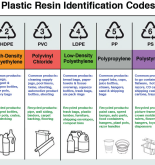Did you know the ocean can improve the air quality by a mile, or at least that how myth tells you. People love to live near the ocean to enjoy improved air quality, even just looking at the sea can guarantee the fresh, clean air environment. But is it really the truth? Let’s find out in this article.
Does the ocean improve air quality?
Yes, the ocean does improve air quality. But how? Did you know that salty air from the ocean’s surface can help reduce of ozone air pollution, especially in coastal areas?
Ozone is a dangerous pollutant formed when nitrogen oxides and volatile organic compounds are produced by automobiles, power plants, and industries and then chemically interact in sunlight. While these man-made sources are the most significant contributors to ozone generation, researchers have highlighted the growing importance of “background ozone” caused by natural occurrences such as wildfires or intercontinental transfer of man-made ozone from outside the United States.
Air quality managers at local, state, and national agencies have requested air quality models that can distinguish between natural and man-made sources of background ozone in order to aid in the formulation of air pollution control plans. As a result, researchers have turned to the waters to learn more about background ozone.
Read our article of Which city has the cleanest air in the world to know which city is the earthly heaven to live in.
Emerging studies suggested that bromine and iodine, two salt-based components (halogens) produced by the ocean, could eventually lower ozone. These findings prompted EPA scientists to study whether and how these compounds could improve ozone modeling. Over the last decade, researchers have steadily built a new framework to better correctly anticipate ozone impacts and dynamics at various geographic scales by adding and analyzing halogen chemistry into the EPA’s Community Multiscale Air Quality (CMAQ) model.
“To depict the quantity of ozone transferred from other continents to the United States, we need to be able to represent the chemistry in air masses as they travel these vast expanses of water,” said Rohit Mathur, an EPA researcher and study co-author. “That’s what compelled us to attempt to represent that process in CMAQ.”
Other studies from EPA of how can the ocean help with air
The most recent study, published last year in Atmospheric Environment, discovered that incorporating bromine and iodine chemistry in the CMAQ Model reduces ozone concentrations in the maritime boundary layer, as well as aloft and inland. They also discovered that bromine and iodine chemistry reduces yearly mean surface ozone by 25% over saltwater, with lower ozone reductions inland.
“This halogen chemistry has greater impacts on coastal locations,” said Golam Sarwar, EPA researcher and study lead author. “As a result, this chemistry is more significant for everyone concerned about coastal air quality.”
With the addition of halogen chemistry to the CMAQ model, researchers now have a new framework that can be updated as new data from field and laboratory investigations becomes available to improve ozone modeling. The researchers are hopeful about the expanding halogen chemistry framework, but they realize its limitations and dynamic uncertainties, as well as the fact that further study is required. Sarwar and Mathur also acknowledge that climate change will most likely have an impact on this halogen chemistry framework.
“This is not my final halogen chemistry article,” Sarwar explained. “In the future, I intend to continue research to improve halogen chemistry and prepare new articles.”


